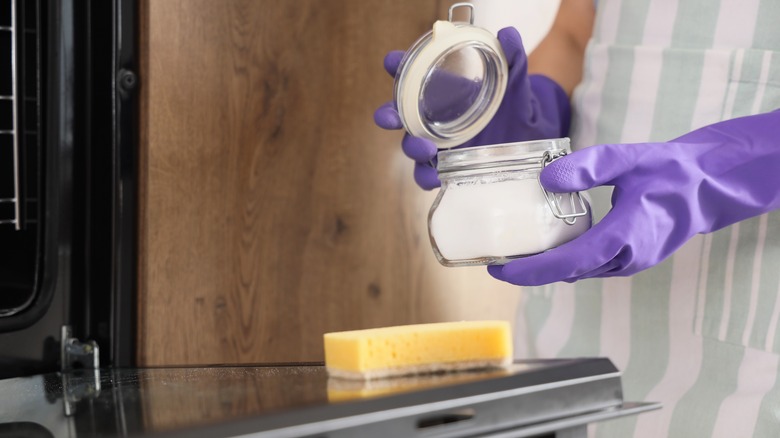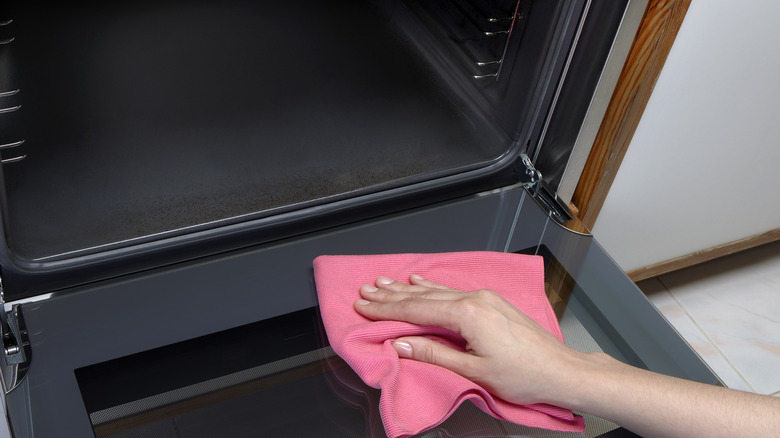Baking Soda Is The Easy Way To Get A Squeaky-Clean Oven
Cleaning your oven might be up there with doing your taxes on the list of the top 10 most-dreaded household tasks. We still make a lot of mistakes when it comes to cleaning our ovens, including relying on the numerous chemical cleaners on the market and the widely misunderstood "self-cleaning" function. Yet one of the most effective and simplest ways to clean an oven is also one of the cheapest: baking soda.
Baking soda is best for oven cleaning for several reasons. In addition to being easy to find and cheap, it's nontoxic. Most of the spray-on oven-cleaning products you'll find on grocery shelves are laden with chemicals, including caustic soda, sodium hydroxide, ethylene glycol (the main ingredient in antifreeze), and methylene chloride. Baking soda is safe for ingestion, which is why it's used in baking and even pharmaceuticals.
Second, baking soda works very well to break down food and grease residue inside ovens, just as it's ideal for cleaning Dutch ovens, microwaves, and kitchen surfaces such as counters and especially dirty cutting boards. As you probably learned in science class back in school, the pH scale (which stands for potential of hydrogen) is a 14-point scale that measures how acidic (less than 7) or alkaline (higher than 7) a substance is. Alkalines neutralize acids. Baking soda is an alkaline substance with a pH of about 9. But most of the food and grease inside your oven, from meats to starches and dairy products, is acidic. In short, baking soda neutralizes that baked-on food and grease, making it easier to clean.
How to clean your oven with baking soda
Now that you know the science behind baking soda's power, let's look at how to use it effectively to clean an oven. The first step is to make a paste of baking soda and water. There are numerous formulations out there, but one good rule of thumb is to use a ratio of 3 to 1, or three parts baking soda to one part warm water. You could also use ½ cup baking soda to 3 tablespoons of water.
Next, remove the oven racks. If they're stainless steel, you can use a sponge to scour the racks, or soak them in soapy water for a few hours. (Aluminum racks, however, will become oxidized in baking soda.) Then use your heavy-duty sponge, a spatula, or even a paintbrush to apply the paste to the inside of the oven, including all metal and glass surfaces. Be careful to avoid lights, heating elements, wires, or openings. Then leave and let it sit overnight, or 12 to 24 hours. The paste will harden, so that when you return the next day, you can simply use a spatula, scraper, or wet paper towels to loosen and remove the baking soda. All that should remain is a stain-free surface!
You can use a damp towel to remove any remaining streaks or patches of hardened paste. For a final polish, you can make a solution of equal parts water and white vinegar, then spray it on surfaces, particularly the glass, to wipe with a cloth until it sparkles. Voila! Without having to spend lots of money or elbow grease (or inhale toxic fumes), you have a clean oven.

